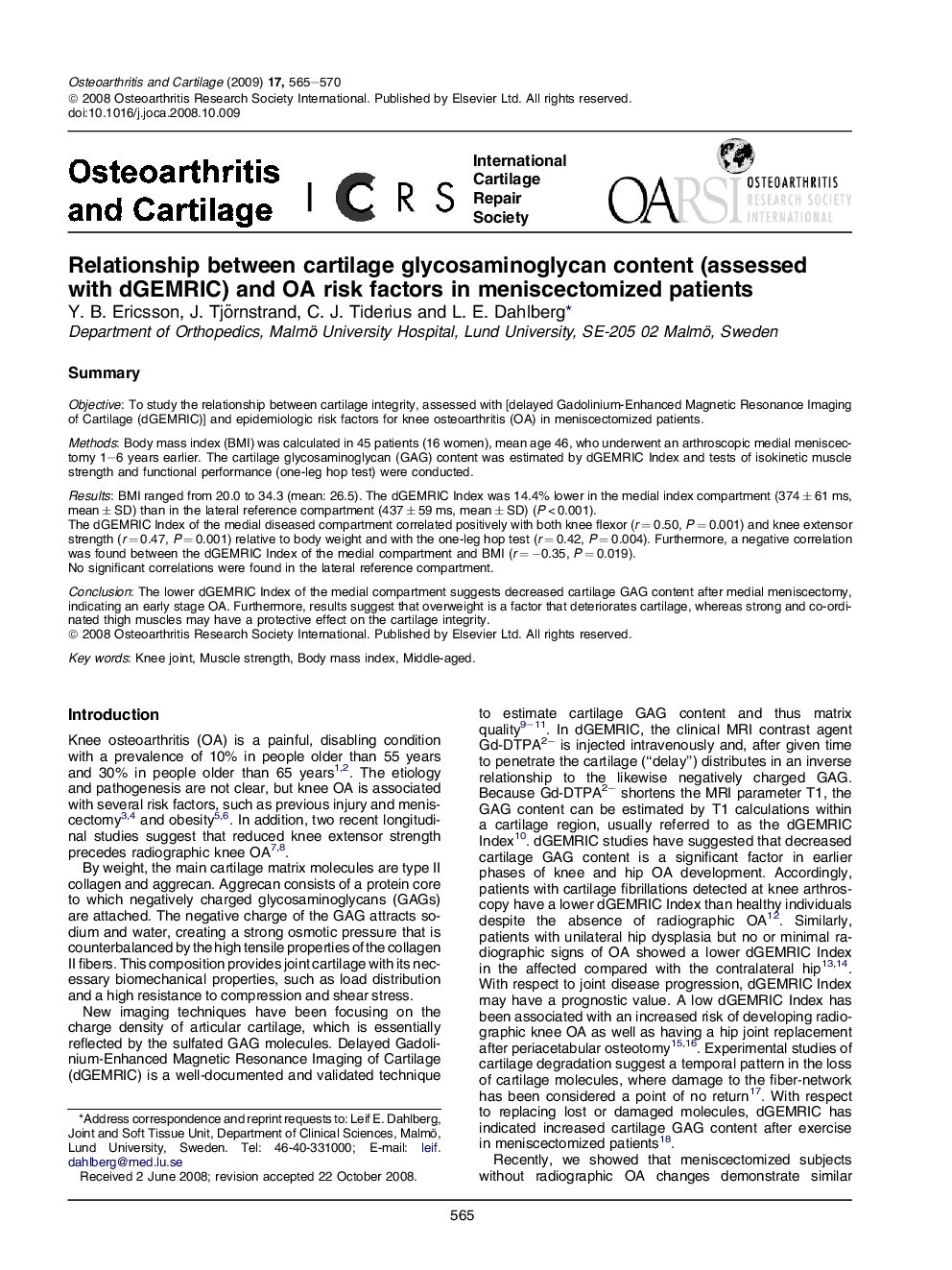| Article ID | Journal | Published Year | Pages | File Type |
|---|---|---|---|---|
| 3381180 | Osteoarthritis and Cartilage | 2009 | 6 Pages |
SummaryObjectiveTo study the relationship between cartilage integrity, assessed with [delayed Gadolinium-Enhanced Magnetic Resonance Imaging of Cartilage (dGEMRIC)] and epidemiologic risk factors for knee osteoarthritis (OA) in meniscectomized patients.MethodsBody mass index (BMI) was calculated in 45 patients (16 women), mean age 46, who underwent an arthroscopic medial meniscectomy 1–6 years earlier. The cartilage glycosaminoglycan (GAG) content was estimated by dGEMRIC Index and tests of isokinetic muscle strength and functional performance (one-leg hop test) were conducted.ResultsBMI ranged from 20.0 to 34.3 (mean: 26.5). The dGEMRIC Index was 14.4% lower in the medial index compartment (374 ± 61 ms, mean ± SD) than in the lateral reference compartment (437 ± 59 ms, mean ± SD) (P < 0.001).The dGEMRIC Index of the medial diseased compartment correlated positively with both knee flexor (r = 0.50, P = 0.001) and knee extensor strength (r = 0.47, P = 0.001) relative to body weight and with the one-leg hop test (r = 0.42, P = 0.004). Furthermore, a negative correlation was found between the dGEMRIC Index of the medial compartment and BMI (r = −0.35, P = 0.019).No significant correlations were found in the lateral reference compartment.ConclusionThe lower dGEMRIC Index of the medial compartment suggests decreased cartilage GAG content after medial meniscectomy, indicating an early stage OA. Furthermore, results suggest that overweight is a factor that deteriorates cartilage, whereas strong and co-ordinated thigh muscles may have a protective effect on the cartilage integrity.
